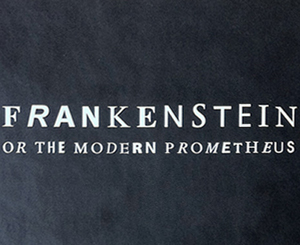Narrative Technique in Frankenstein
Mary Shelley had many narrative conventions hitherto followed by earlier writers. Jane Austen had written many novels, but the area, she covered was restricted to one or two families. Her realistic mode did not suit Mary Shelly.

Since the novel is said to have originated in the so-called ‘ghost-story’ context, she fell back on the Gothic tradition, but altered it drastically. So much so that the novel as it was published could hardly be called Gothic, for, with a few exceptions, there are no supernatural trappings. As a literary heiress to two great and eminent intellectuals, Mary seems to have examined and tested all existing conventions, but she found none which could suit her: she invented her own – a hybrid of ‘Chinese box’, ‘point of view’, ‘indirections’ and Framed or Embedded Narrative, which is a also known as framed narratives or Chinese box structure of stories within stories, metafiction. The first narrative was taken by Walton Who writes to his sister Mrs. Saville. Since the plot of the novel in this section is carried on by letters, at this stage the epistolary narrative has been employed from there the embedded structure of the narrative is taken up by Victor from chapter 1 to 10. Victor’s narrative then gives a frame to the narratives of Monster from chapters 11 to 16. From there again the turn of narrative is carried further by Victor up to 24 and Walton takes over the narratives to the concluding part of the novel and the frame is closed up. The structure is tight because of embedded narrative. It is written in 1st person narrative, but there are three 1st person narratives.
The intention of each narrative is to create some effect on the narration. The narrative of monster attempts to convince his creator, Victor, to take his responsibility as parent and to make a mate for him. Victor’s narrative ventures to persuade Walton to end his journey and to destroy the monster.
Through the narratives, the parallels between the characters are sketched that linked the stories together. The ambition of Walton turns him a potential Victor Frankenstein and his isolation from the people brings him close like the monster. In this sense, Walton is parallel to Victor and Monster.
The novel is a recorded replica of the diary maintained by Walton, and at least stretch our imagination so as to take what her camera covers to be real, the happening s are all real, for Mary Shelley is not interested in narrating a story or stories, her primary intent is in Showing, and she shows us a slide after slide of diverse people, their nature , their corrupt institutions like the church and the courts of law; she also shows how most bourgeois societies live in ivory towers; and evaluate a man by his descent and by his external appearance. They are not bothered about the inner or inherent good and virtue one may have. Each slide engenders the next and so the link at all stages acts as a progressively advancing fast video cassette till the Principal scribe chooses to sum up. But do we find any closure? Where does the monster go? Springs out on the raft and disappears borne by waves into distance and dark. Walton promises to sail home, but does he? He is like Victor, an over-reacher; would he give up his quest after having observed the tragic end of Victor? We have no answer? There is no hint; we are on the frozen seas far remote from human habitation. The end is open.
Mary Shelley shows, not tells; My readers! see what comes one after another. And we see, hardly knowing that the entire novel is a transcribed version. She spares none, misses nothing, and layers after layers are coming up showing us the diverse chunks of the contemporary life. By effacing herself completely, she gets an edge and advantage over realistic narratives: she can expose the age-old corrupt values and equally corrupt social institutions by distancing herself from the characters and their acts. Mary Shelley paved the way, she pioneered a new genre-science fiction – and raised questions which have grappled the contemporary scientists, and which are being vigorously and zealously explored by the western scientists-the concept of re-animating a dead man, even cloning a being, manufacturing human organs and tissues. The novel is a real tour de force -especially when its structure and the inner texture are woven, fused, interfused and transfused.
Reading on Frankenstein
Frankenstein as a Gothic Fiction
Frankenstein as a Science Fiction
Frankenstein as the Modern Prometheus
Central Themes in Frankenstein
Destructive Consequences of Single Minded Obsessions
 |
bachelorandmaster.com |